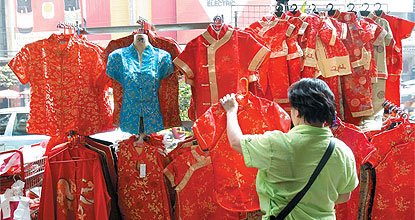A few days before the Lunar New Year on Monday, traffic in Bangkok's Chinatown district of Yaowarat is jam-packed as usual. Street vendors display tonnes of symbolic objects and decorations, from red ang pao envelopes and lanterns to character banners like always. But what sets this year apart is that one will be hard pressed to find red T-shirts.
Suwan, 53, who has sold Chinese symbolic objects for nearly a decade, said there was a much smaller supply of red T-shirts at shops in Chinatown this year.
Wearing a plain pink T-shirt, Mrs Suwan said this year her shop's apparel selection mostly was traditional Chinese-style clothing such as qipao rather than red T-shirts with designs.
"I did not make any new orders this year. I'm afraid people might not want to buy red shirts because most are concerned about the political divide and don't want to be seen as taking sides," she said.
Indeed, Thailand has been polarised over the past few years, shortly before former prime minister Thaksin Shinawatra's government was toppled in a coup. Yellow has since been used by the People's Alliance for Democracy, the main group of protesters against his government, allegedly to show their loyalty to the Palace. But it was not until last year that the group supporting Mr Thaksin and his former MPs picked red as the hue for their cause. Thais' political orientation has become colour-coded ever since.











